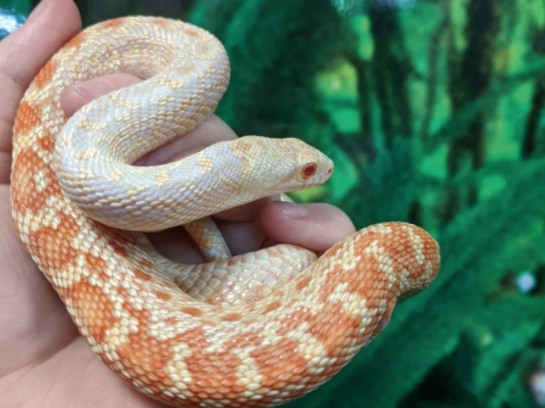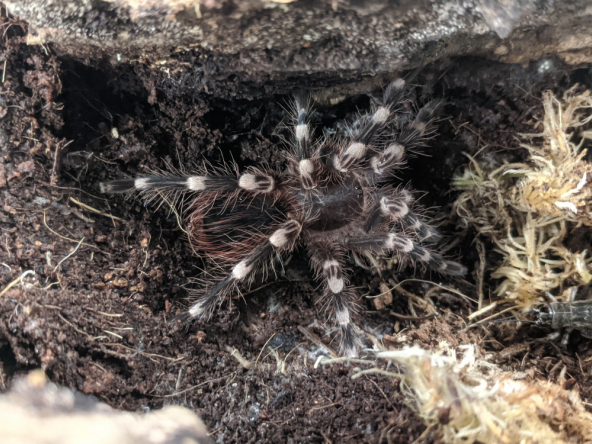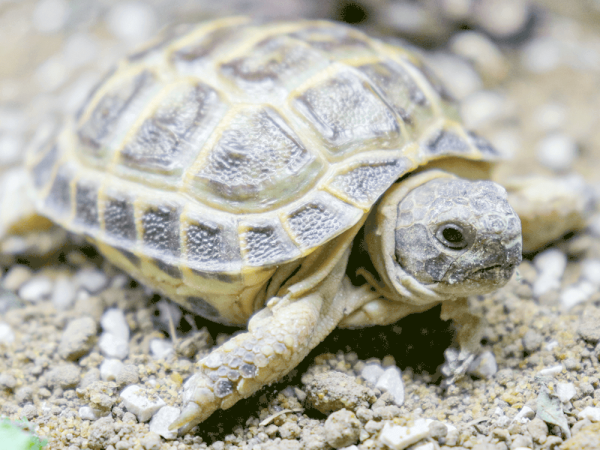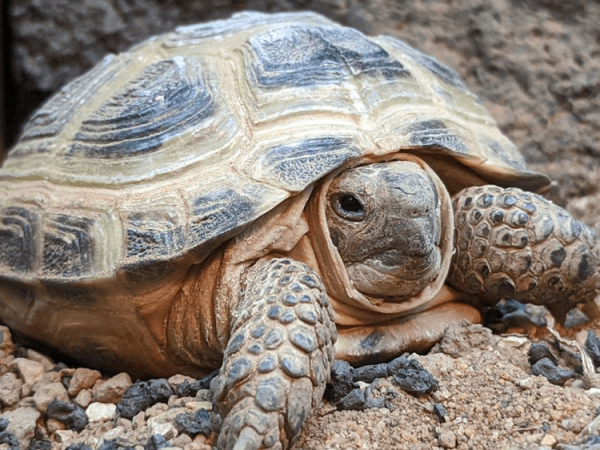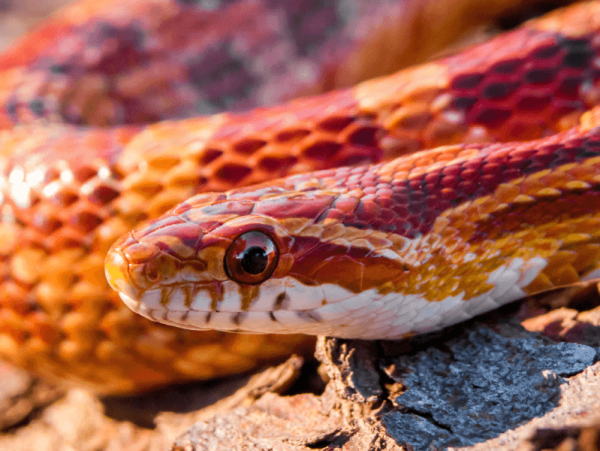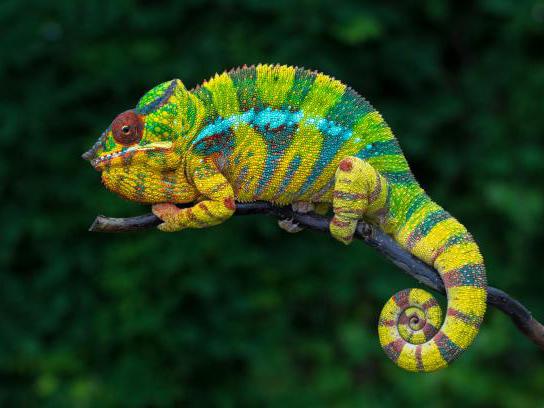Optional extras
Gopher snake, Pituophis catenifer, care sheet
Categories: Care sheetsSnakes
Gopher Snakes are a diverse species which include many recognised subspecies. They inhabit a variety of habitats throughout North America including deserts, prairies, woodlands, brushlands and forests. Most Gophers are expected to reach a length of between 5 - 6ft but some subspecies can reach 9ft!
They would usually display pale brown and tans with dark brown-black patterns down the body, though the appearance of these patterns and shades can differ between subspecies. You'll notice in albino Gophers, the dark brown shades have been replaced with orange patterns and the body colours are white-yellow in colour. They also have the red eyes typical of an albino. They are quite skittish but should be tamed down fairly easily.
Housing
Gopher Snakes require a minimum enclosure of 4 x 2 x 2ft. Within this space, it is important to provide a good variety of decor for them to utilise. You will find the more decor is in your enclosure the more your snake may venture out as it will not only feel more secure but will also have more to explore!
Decor can include a variety of branches, tunnels, cork pieces, logs, rock and foliage and is even more beneficial for your snake when moved around every now and then. It is also important to incorporate at least two hiding spots, though more is recommended, and these will need to be available on both the warm and cool sides of the vivarium.
Substrates for the Gopher snake shouldn't hold too much humidity and should provide a good opportunity for burrowing. Good examples include orchid bark or sand/soil mixes. This will need spot-cleaning regularly and should be fully cleaned every 6 - 8 weeks to keep a clean environment for your snake.
Heating and lighting
As a reptile, basking opportunity will be essential in your setup, and best reached with a basking bulb or ceramic heat emitter to one end of the vivarium. It is essential that this bulb is protected with a guard as snakes are quite inquisitive and have a tendency to burn themselves if given the opportunity. It is also essential that any heat source be attached to the relevant thermostat, ensuring the safety of your animal and keeping the correct temperatures in your environment.
For the Gopher Snake, the basking temperature should be around 32C with the cooler end being around 22-25C, giving a good gradient for thermo-regulation. Temperatures can be monitored using a digital thermometer for accuracy. During the night, these temperatures can safely drop to around 15C, and this provides a drop that would be natural in the wild. In a natural setting, your Gopher Snake would also be exposed to UVB and this makes a beneficial addition to your vivarium, especially for promoting better health and well being.
The bulb you use would depend on the height of the enclosure but some good examples are Arcadia's shade dweller or a 6% T5 strip bulb (enclosure height dependent). Any UV will have a lifespan, after which the UV will fade despite the bulb still glowing, so it is important that this is kept on top of. The lifespan would be bulb dependent and can range from 6-12 months. This bulb will be used in a 12-hour cycle, and will go off as the temperature drops to create good day/night periods.
Humidity
Gopher Snakes do not need much humidity and intervention shouldn't be necessary, but during shedding it is a good idea to mist the environment; raising humidity a little and/or provide a mossy area. This will help loosen the skin and make the process a little easier. Handling should be avoided during this time so that the skin isn't damaged and therefore more difficult to shed off. There should always also be a water dish available for both drinking and bathing in, which will need to be kept clean to avoid bacteria build-up.
Diet
Being carnivorous, the Gopher Snake will feed solely on other animals, which in captivity mainly consists of defrosted mammal species. Prey items will gradually get larger with your snake, and can include rats, mice and chicks, though stable should be rats and mice. The prey will be defrosted and offered on tweezers, which should encourage your snake to strike (with a bit of movement) and coil the prey as it naturally would. Ensuring the item is warm can also encourage better feeding.
When young, feeding can take place once a week as the snake will require the protein for growth and development. In to adulthood however, feeding routine is best to change to every 10 days - 2 weeks, depending on the meal being offered. Always use your snake’s body condition to judge this so that you are able to keep them in a healthy weight.
Species profile
- Scientific name - Pituophis catenifer
- Adult Expected Size - 5 - 6ft
- Habitat - Deserts, prairies, woodlands, brushlands and forests of North America. Terrestrial living.
- Required Enclosure Size - 4 x 2 x 2ft
- UV Lighting - 2 - 3 UVI (shade dweller or a 6% T5 strip bulb - enclosure height dependent)
- Expected Lifespan - 12 - 15 years
- Temperature Gradient - 22 - 32C
- Humidity Levels - 40 - 50%
- Feeding - Carnivores - Frozen food such as mice, rats and chicks.
- Handling - Can be skittish, usually easy to tame. Handling to be avoided 48 hours after feeding and when shedding.
Jeremy Gay is an author, lifelong fishkeeper, and exotic pet specialist. He's a former editor of Practical Fishkeeping Magazine, UK editor at Reefbuilders, a former pet store manager, and has collected wildlife in Sri Lanka and the Amazon. He's been on tv and radio, contributed to Koi Carp and Gardeners World magazines, been a product tester, a judge, and a product developer.




